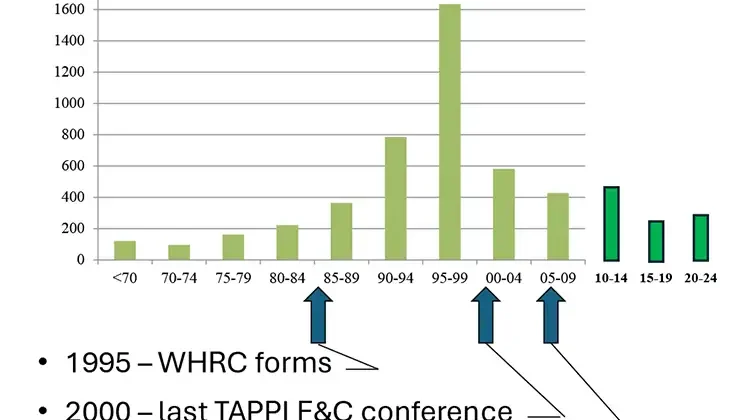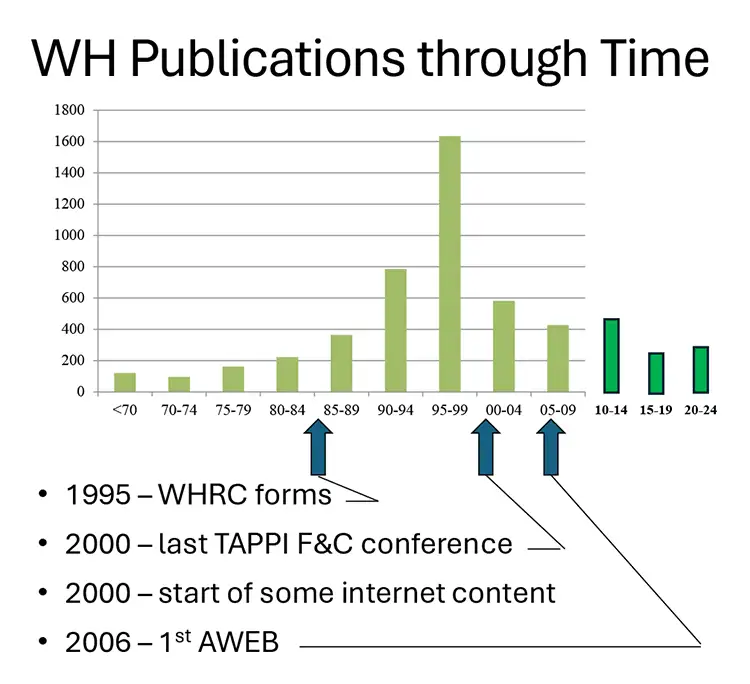
Many industrial technologies follow a bell-shaped life cycle graph. These are introduction (such as invention), growth, maturity and decline. For example, the venerable DC motor was invented in 1832, peaked in the mid-1980s with the advent of computer-controlled drives and then went into a steep decline in the 1990s when the DC motor’s duty was taken over by more capable and less maintenance-intensive AC vector drives and, soon after, servo-drive motors. While industrial computers (such as drives and PLCs) also see a similar pattern, the life cycle for a typical model is less than five years.
Which side are you on
If you are on the growth side, predictions about sales a half-decade hence may be little more than informed speculation. Even when you are in the middle of a cycle, it sometimes can be difficult to tell which side of the “hump” you are on.
For example, are solar cells or current e-car batteries (both are made as webs) on the growth, mature or decline side? Is paper in decline (production peaked in 2013) or will it see a resurgence due to increased demands for eco-friendly packaging? It is much easier to determine that you are on the decline side of the life-cycle curve, although it may not be as easy to divine whether the tech will be supplanted, subsumed or disappear entirely.
Web-handling data stabilizes

This brings me to my favorite topic: Web handling. As seen in Figure 1, we reached peak publication in the late 1990s. I updated this 2009 analysis, which thankfully shows that the declining trend of the early 2000s has stabilized. It is even better news if my 600 weekly YouTube shows, which first aired in 2013, are included. (However, the Q-test might not allow including these because I could be a statistical outlier.)
So, what might we conclude from this data and from the nature of the publications themselves?
1. Industrial and academic R&D, which had comprised a sizable fraction of the literature, mostly has ended and would take most of a decade to re-establish should the need be perceived. The closure of the Web Handling Research Center a half-decade ago was just one such change.
2. The great majority of current web-handling content is this Converting Quarterly magazine, ARC conferences and my YouTube shows.
3. While control innovation (and automation) continues to be strong, new mechanical designs have been much sparser for decades. For example, our best-practice guides, nip rollers, spreaders and many other elements largely have been unchanged for a half-century.
4. Web-handling education has been steady, or even growing, for decades. It is a must-have commodity for most anyone working with webs. As such, it probably will continue in a similar fashion for some time.
The challenge for all of us is how to maintain, or even grow, applied web-handling knowledge given that the exciting buzz of new research and mechanical inventions is slower than at any time in the last 40 years.

David R. Roisum, Ph.D.
920-312-8466; drroisum@aol.com
ARC Member, ARC TV Presenter,
R2R Presenter, Converting School Educator

